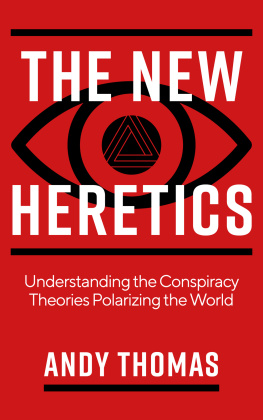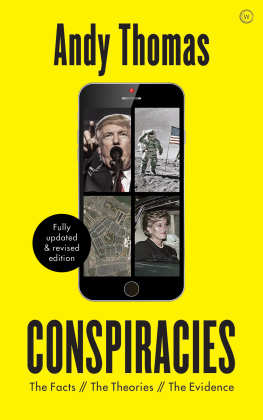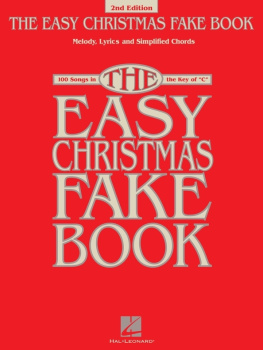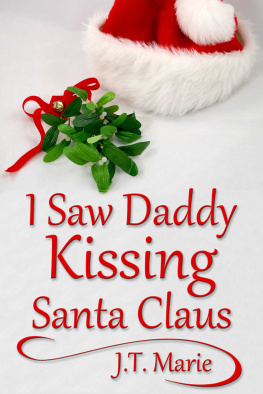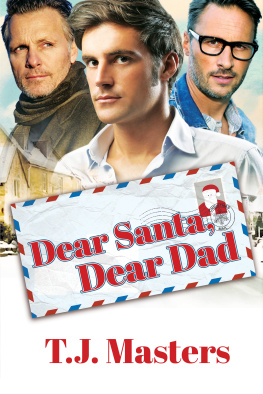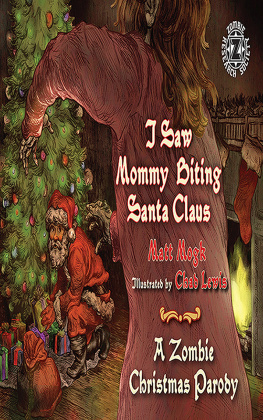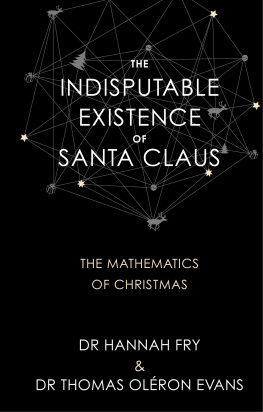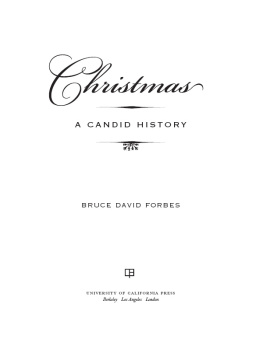Andy Thomas - Christmas: A Short History from Solstice to Santa
Here you can read online Andy Thomas - Christmas: A Short History from Solstice to Santa full text of the book (entire story) in english for free. Download pdf and epub, get meaning, cover and reviews about this ebook. year: 2019, publisher: Ivy Press, genre: Religion. Description of the work, (preface) as well as reviews are available. Best literature library LitArk.com created for fans of good reading and offers a wide selection of genres:
Romance novel
Science fiction
Adventure
Detective
Science
History
Home and family
Prose
Art
Politics
Computer
Non-fiction
Religion
Business
Children
Humor
Choose a favorite category and find really read worthwhile books. Enjoy immersion in the world of imagination, feel the emotions of the characters or learn something new for yourself, make an fascinating discovery.

- Book:Christmas: A Short History from Solstice to Santa
- Author:
- Publisher:Ivy Press
- Genre:
- Year:2019
- Rating:3 / 5
- Favourites:Add to favourites
- Your mark:
- 60
- 1
- 2
- 3
- 4
- 5
Christmas: A Short History from Solstice to Santa: summary, description and annotation
We offer to read an annotation, description, summary or preface (depends on what the author of the book "Christmas: A Short History from Solstice to Santa" wrote himself). If you haven't found the necessary information about the book — write in the comments, we will try to find it.
Andy Thomas: author's other books
Who wrote Christmas: A Short History from Solstice to Santa? Find out the surname, the name of the author of the book and a list of all author's works by series.
Christmas: A Short History from Solstice to Santa — read online for free the complete book (whole text) full work
Below is the text of the book, divided by pages. System saving the place of the last page read, allows you to conveniently read the book "Christmas: A Short History from Solstice to Santa" online for free, without having to search again every time where you left off. Put a bookmark, and you can go to the page where you finished reading at any time.
Font size:
Interval:
Bookmark:


A SHORT HISTORY FROM SOLSTICE TO SANTA
ANDY THOMAS


I grew up in a household that very much celebrated Christmas. My parents would send me and my sisters to bed one December night, and the next morning the living room would be mysteriously and magically transformed. I would stare in awe at the wonderfully peculiar fir tree now standing by the window, glowing and scented. This transformation, repeated in countless other homes, announced that, for the next week or two, the world had changed, and life would be different.
In the run-up to each Christmas, my father had a custom of reading Charles Dickenss A Christmas Carol to himself as a way of welcoming in the seasonal atmosphere. As we grew old enough to absorb the tales subtleties, he began to read excerpts to us until eventually I adopted the habit of annually reading it myself for a number of years. Dickenss atmospheric vision of foggy shadows and bright joy left its mark on me.
Decades went by, and my life embraced authoring and lecturing on unexplained phenomena and hidden histories. I never lost my love for Christmas and, as I became drawn to investigate folklore traditions, I wanted to know more about the festive season. I discovered in its past a rich seam of overlapping cultures, a complex history of intrigue, and a whole cauldron of different meanings. Yet all were essentially celebrations of light over darkness. In a sometimes difficult and unpredictable world, this has always been important.
As I began to find myself spending each November and December giving live presentations that attempted to express all of this, I was increasingly asked if I had written a book that took the same approach. Here, then, is the answer to those requests.
While deliberately concise in its format, I have tried to be inclusive and respectful to the different beliefs and numerous global traditions, and I hope this will encourage readers to reassess a celebration that, in these days of overt commercialization, sometimes gets a bad press. Christmas is far more than plastic Santas and shopping sprees, and it can still have great meaning for us today if approached in the right spirit.
Christmas and its ancient alternatives have seen many modes of expression around the world, although certain countries have taken the lead in setting and resetting the form over the centuries. There is, then, an inevitable emphasis on Great Britain, Scandinavia, Germany, and North America, but ancient Egyptians and Romans also feature, and I have tried to cast my net wide. Some material will be familiar, but I have highlighted some unsung areas of the season that may surprise some readers, and I devote a few extra pages to the Puritan ban on the festivities in the mid-1600s, because it emphasizes, for the Scrooge-sympathizers in our society, what happens when Christmas is taken away, and why we should value such important celebrations.
Bring on the seasonal cheer, then, as we journey through the multiple guises and the many wonders of Christmas.
Andy Thomas

A s mid-December approaches in Western countries, a special atmosphere sets in. The weather and light have a feeling all of their own, and by way of acknowledgment, people start mounting a festival that has been with us, in some form or another, since ancient times. They put up colorful lights and sparkling objects to illuminate the gloom, hunt for gifts that might please loved ones, encourage good cheer, extend a spirit of goodwill beyond the usual boundaries, and plan meals on a scale rarely attempted in any other season, as if in willful defiance of winters steely austerity. Soon everything orbits around this outlandish and yet compellingly magnificent celebration.
So where did all this glorious madness come from? Why do we do what we do at Christmas?
When we alter the environment around us, we are, of course, making a powerful statement; that we want to behave differently and feel different during this period. We are drawing a line in the sand from the rest of the year and declaring our intention to enter a state of mind where celebration takes the place of anxiety, and being nice to ourselves and to others is allowed just a little more than usual. We have entered the Christmas zone, where normal rules no longer apply.
So many decorations light up, or hold echoes of nature: radiant stars, reflective orbs, snowflakes, and strips of tinsel on a richly adorned tree recalling frost-covered branches. Christmas celebrations evolved in the Northern Hemisphere, where December is a cold, dark time of year with nature at its most dormantand so people remind themselves of its beauty even in the harshest times and cherish every little glow they can find. It is a festival of light in the darkness.
To celebrate is to be human and, whether we consciously know it or not, each of us is deeply rooted in the old ceremonies, beliefs, and rituals of earlier cultures. By looking back at the legends and at how this winter feast day has grown and evolved over the years, we can better understand ourselves and know just why so many are raising a glass and wishing everyone a Merry Christmas in rooms full of strange but beautiful paraphernalia. One way or another, people have been doing this for a long time.


I t is a simple truth that long before Christmas became Christmas, there were midwinter festivals across the Northern Hemisphere around what modern calendars now call December 25. The very word seasonal, which can often refer to Christmas, draws our minds to a stark awareness that we live on a tilted, spinning globe that revolves around the sun, exposing the north to more sunlight in summer and less in winter and leaving its inhabitants with harsh, icy beauty or depressing, misty dullness in the dark days of December.
To the ancients, whose existence hung on the moods of the weather, recording the movements of what they saw in the heavens was crucial. It was their only guide to understanding and predicting the seasonal cycles. So they built temples that, as far as we can see, served both ceremonial and practical purposes. Whatever else some of the bigger stone circles and complexes of Europe might have been, they also appear to have served as seasonal clocks, ), marking the extreme ends of the earths elliptical procession around the sun, from summer to winter and back.
Until recently, it was assumed that Englands famous Stonehenge monument in Wiltshire was orientated around midsummer. Recent discoveries, however, suggest its original users visited it primarily at the winter solstice. The huge stones have alignments to both seasons skies, but midwinter appears to have mattered more; some say the tallest stone is placed to point directly to the midwinter sunrise. It seems that knowing when the sun would begin its first small steps back toward full strength mattered more to them than celebrating its summer glory.
Font size:
Interval:
Bookmark:
Similar books «Christmas: A Short History from Solstice to Santa»
Look at similar books to Christmas: A Short History from Solstice to Santa. We have selected literature similar in name and meaning in the hope of providing readers with more options to find new, interesting, not yet read works.
Discussion, reviews of the book Christmas: A Short History from Solstice to Santa and just readers' own opinions. Leave your comments, write what you think about the work, its meaning or the main characters. Specify what exactly you liked and what you didn't like, and why you think so.

